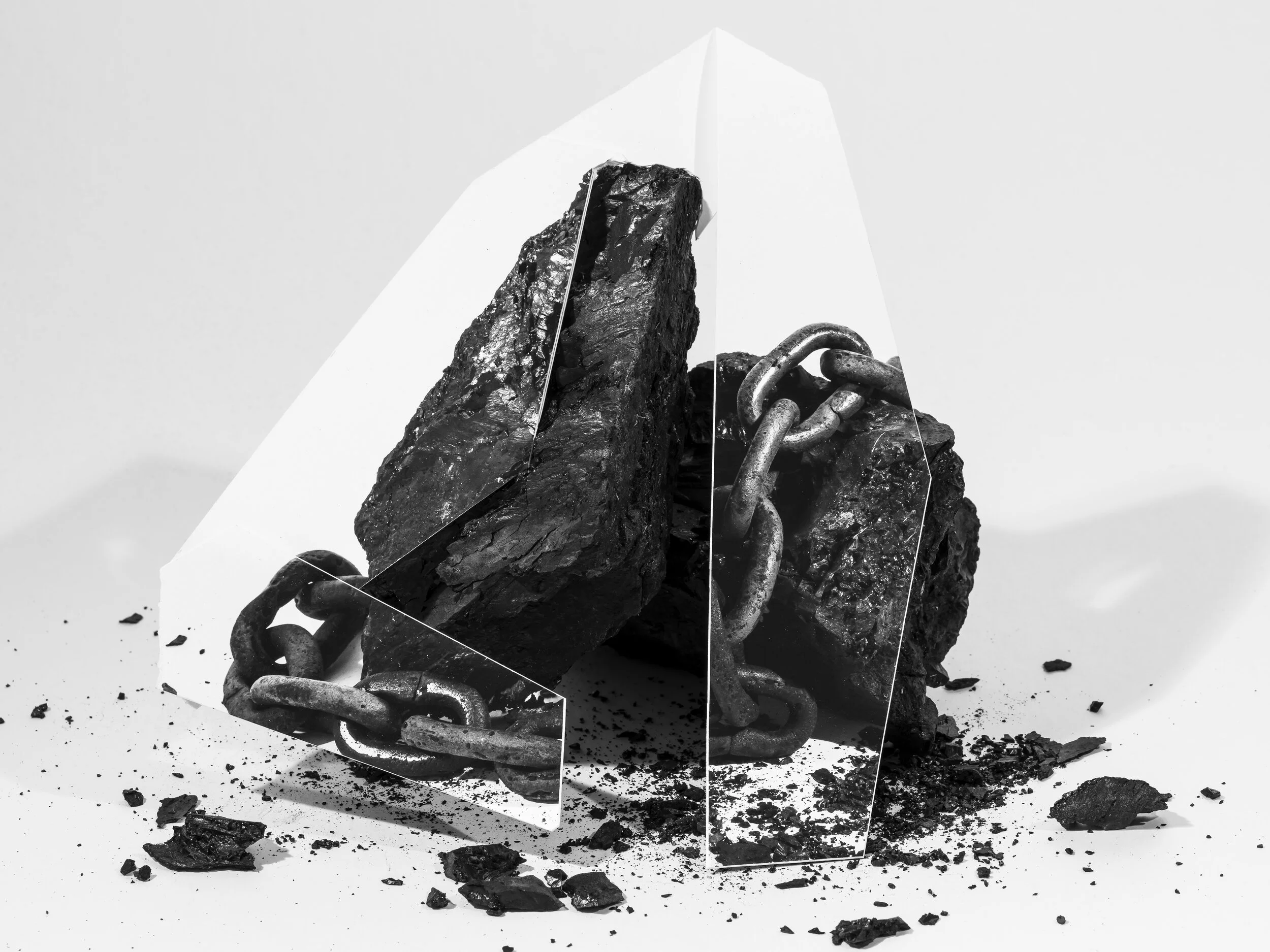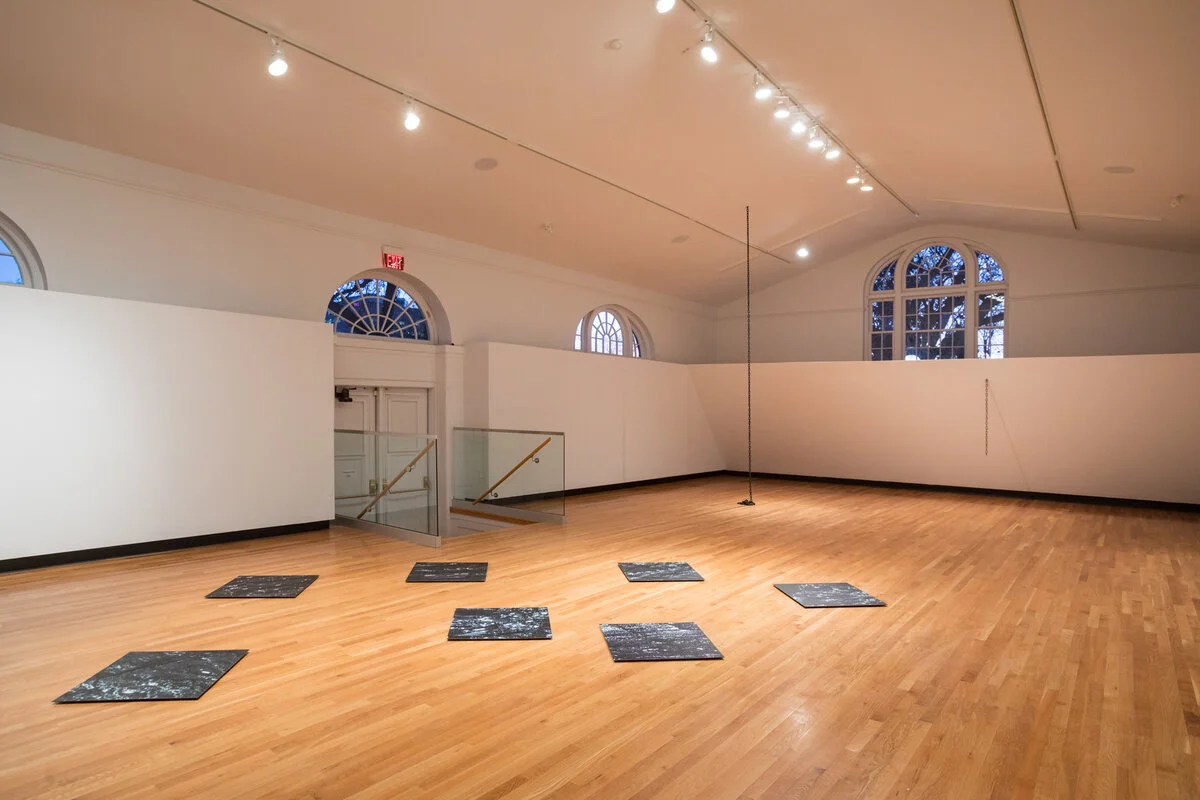12.09.2017 | 02.04.2018
A SLOW LIGHT | TYLER LOS-JONES
Opening Reception: Saturday, December 9 at 8 PM
Reception sponsored by Andrew Hilton Wine & Spirits
The community of Crowsnest Pass is located in a valley surrounded by ancient seabeds which have been folded to produce a dramatic mountain environment. Each band of strata in the rock signifies vast amounts of energy and 'deep time'—a geological concept in which the existence of humans amounts to the tiniest fraction of earth's history. Within this strata are seams of coal; dense black bands of compressed and concentrated extinct life-forms. Through processes such as photosynthesis, these ancient organisms spend their lives collecting solar energy, only to be released 100 - 145 million years later as this 'fossilized sunlight' is burned. Crowsnest Pass is not a location where the myth of a static, objective, or disconnected landscape has much credence; the area is notable for the relationship its inhabitants have to an overtly dynamic environment. One only has to look to Turtle Mountain, named "the mountain that moves" by local indigenous peoples, and the devastation of Frank Slide below, to understand how landscapes are continually in flux. Scattered throughout the Pass are various markers signifying how people navigate and relate to this environment; these directional aids inform the objects and images included in Tyler Los-Jones' exhibition, a slow light.
Los-Jones first began observing and identifying these navigational markers during a 2015 residency at the Gushul Studio in Blairmore, and has continued his research over the past three years. Examples of these orientation markers range from the Turtle Mountain monitoring station; the windswept Burmis Tree (the most photographed tree in western Canada despite its death in the late 1970s); and a chain hanging from the slanted wall of a mine, used as a tool during mine tours to signify the vertical axis for visitors who often became disoriented. In an area which has historically found economic sustenance through resource extraction, and is now the site of increased tourism, the wayfinding devices take on a double meaning; reflecting the history of the community in relation to a shifting environment, as well as the desires which are projected onto the place by those from outside the region. Through this collection of photographs, and sculptures, a slow light aims to generate experiences for wayfinding, disorienting and reorienting our sense of time and space in a complicated present.
Tyler Los-Jones makes objects and images from his home in the Rocky Mountains of Alberta. The work he has produced over the past decade aims to complicate inherited assumptions of environments by bringing the unnatural aspects of the western conception of nature to the forefront. Los-Jones is fascinated by the role photography plays in the production and the fulfilment of our expectations for environments.
Los-Jones has recently exhibited work at Art Gallery of Alberta (Edmonton), Banff Centre for Arts and Creativity, Division Gallery (Toronto), and Ditch Projects (Springfield).
a slow light is organized by the Southern Alberta Art Gallery in collaboration with Confederation Centre of the Arts, Charlottetown, PEI. Like at the Gushul Studio, Los-Jones participated in a residency this past summer and will exhibition work responding to the specificities of that place and to the nature of residencies more generally. Fuding assistance from the Canada Council for the Arts, Alberta Foundation for the Arts, and the City of Lethbridge.
Los-Jones would like to thank Jarvis Hall Gallery, Resolve Photo and the Crowsnest Museum.







